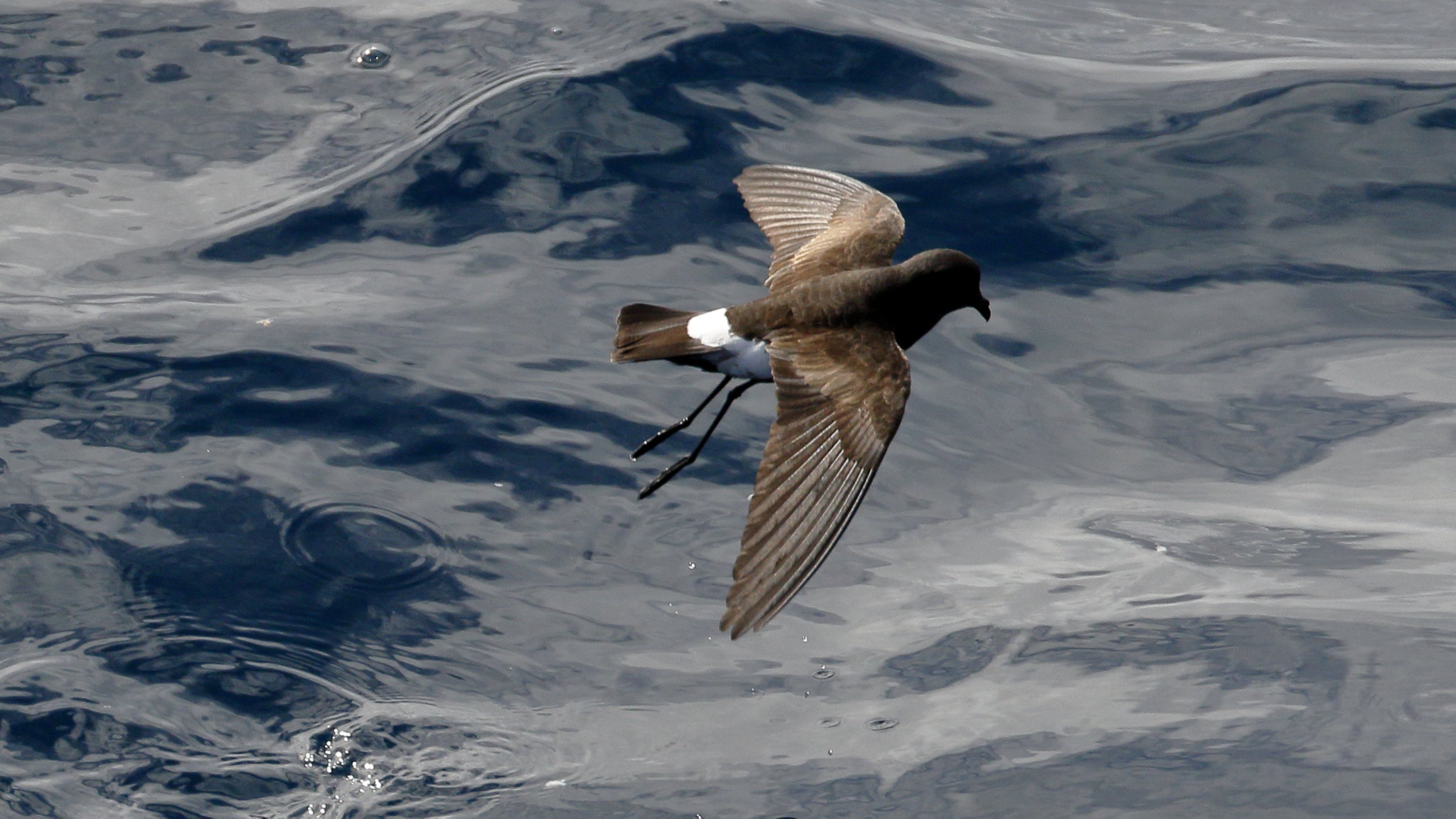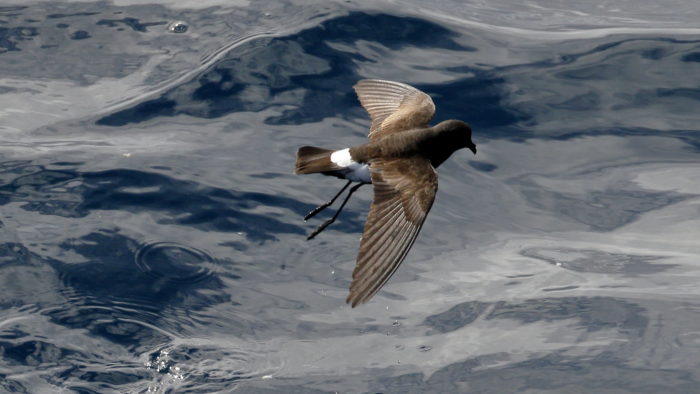
Sea Wonder: Storm Petrel

Because these birds fly alongside ships during storms to take shelter from high winds, sailors’ legends say the appearance of a storm petrel foretells bad weather, but like other species of seabirds, they can actually demonstrate the health of our global ocean. Learn more about storm petrels in this Sea Wonder!
Appearance
There are about 20 species of storm petrels in the world, and they are fairly small seabirds, reaching body lengths of between six and 11 inches when they are fully grown. They are generally darker in color except for their tail and leg area, which is generally a lighter color like white. Their wings are generally rounded at the tips, and they have forked or square tails, a medium-sized bill at the front of their face, and webbed feet except for a hind talon which is separated.
Diet & Habitat
Storm petrels spend much of their lives flying over the ocean and spend the breeding season on islands or rocky shoals. Their diet consists of aquatic organisms that are at or near the surface, such as small fish, squid, jellyfish, and planktonic crustaceans.
Some species migrate large distances each year and others have a smaller home range. Bird watching is a popular activity in sanctuaries, and storm petrels can be found in many of America’s national marine sanctuaries for at least part of the year, including: Olympic Coast, Stellwagen Bank, Florida Keys, Monterey Bay, Greater Farallones, Cordell Bank, Channel Islands, Papahānaumokuākea Marine National Monument, Hawaiian Islands Humpback Whale, and National Marine Sanctuary of American Samoa.
Life History
Storm petrel chicks are born on offshore islands during spring, summer, or fall months depending on the hemisphere in which their species is found, and are generally leave the nest to fend for themselves after about two months with their parents. Incubation by both parents takes between three and seven weeks depending on the species, and nests are generally in crevices or underground burrows rather than material nests.
They reach full size and adulthood within their first year and have an estimated maximum lifespan of 25 years. They participate in mating rituals near the same breeding site at which they were born, and have the same mate for many years if not their whole lives. They are generally nocturnal birds that can rest half of their brain at a time while flying instead of stopping to sleep. They appear to walk on the water’s surface and their name way be a reference to Saint Peter, a religious figure who walked on water.
Sea birds, including storm petrels, are known as sentinel species that are excellent indicators of ecosystem status. While they can’t tell scientists how their environment is, their health and behavior can help scientists understand offshore ecosystem health and how policies are working.
Threats & Conservation
Storm petrel populations vary in terms of health, but all have common threats facing their well-being. These include habitat loss, invasive species, decreased food availability due to overfishing, entanglement in fishing gear, plastic ingestion, and pollution. Luckily, there are a number of organizations taking action to protect seabirds. One organization is NOAA’s National Marine Fisheries Service, which has its National Seabird Program dedicated to protecting and conserving seabirds in the United States. Their program offsets threats like entanglement due to the birds trying to catch food in fishing gear and supporting national and international agreements to reduce entanglement in non-U.S. fisheries.
You can help protect seabirds wherever you live by choosing sustainable and responsibly sourced seafood, reducing your home’s plastic consumption, and participating in seabird watching activities that generally include some form of education.
